fannyzeng's blog
Are you interested in printing a custom hardcover book? It can be an exciting and rewarding experience. But it can also be a bit overwhelming if you're not familiar with the process. From understanding the different factors that affect cost to deciding which company to use, there's a lot of things to consider.
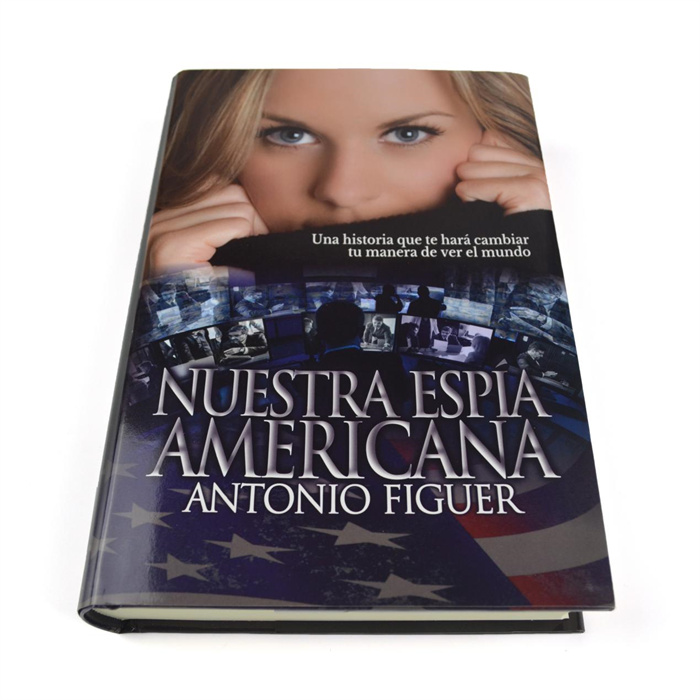
In this article, we will provide an overview of the hardcover book printing process, discuss the various factors that impact cost, offer tips on finding the best price for your book, and give advice on comparing quotes from different companies. We hope this will help readers get a better understanding of what to look for when printing their own custom hardcover book. So they can get the best deal and highest quality product.
Overview of the hardcover book printing process
Printing a custom hardcover book can be an exciting and rewarding experience. But it requires an understanding of the different steps that go into the process. From selecting the right materials for the cover and spine to binding the pages together. There are many elements that need to be taken into consideration when printing a hardcover book.
When it comes to cover and spine materials, there are a few options available. Most commonly, books have covers that are made of cardboard or paper-based boards. While their spines are often covered in cloth or leather. Both of these materials come in a variety of textures and colors, allowing for more creative design options. The binding process is also essential for securing all of the pages together. So they can be read easily without falling apart.
Once all of the material and design decisions have been made. It's time to choose the right printing technology for your project. Offset lithography is one popular method used for printing hardcover books. Which involves transferring images onto metal plates before pressing them onto paper. Digital printing is another option which uses toners instead of ink to create high-quality results at a lower cost than traditional methods. Depending on your budget and desired outcome. You may want to consider both options before making your final decision.
Finally, you'll need to decide on what size book you're looking for. From pocket-sized books up to large coffee table books. As well as any special dimensions. Such as landscape orientation or foldouts that will affect cost and production time. Knowing how big you want your book to be before beginning production. It will help make sure you get exactly what you’re looking for in the end product.
With this overview of what goes into printing a custom hardcover book. Readers can make more informed decisions when selecting their printer. And get the best deal possible on quality products with lasting impact!
Factors that impact cost of printing a custom hardcover book
Printing a custom hardcover book can be a costly try. So it's imperative to consider all the factors throughout the process. From paper and stock weight, to page count and printing method. There are numerous aspects that will impact total cost.
To start, heavier stocks tend to be more expensive than lighter ones. Certain specialty papers such as linen and metallic will also add additional expenses. Besides, the number of pages in the book should be taken into account. As this requires more time and material.
The printing method used is another aspect that needs to be carefully evaluated. While offset lithography has longer turnaround times due to its multiple-step production process. It's generally less expensive than digital printing. However, digital printing may not produce as high quality results as offset lithography. But is often more affordable for shorter runs and faster overall.
Finishing options such as lamination, embossing, foil stamping. Or dust jackets can also have an effect on the total cost depending on their complexity. Getting these right can make sure your book stands out from others on the shelf. Further savings can be made by ordering in bulk if you plan on producing multiple copies of your project.
By taking all these factors into consideration before beginning production. It's possible to get a great deal while still receiving high quality results within budget constraints!
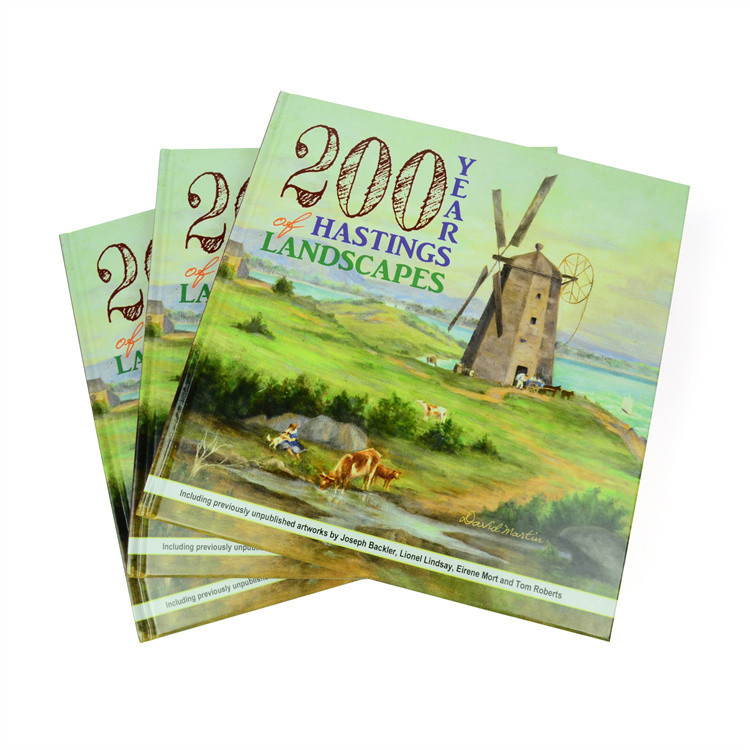
Printing a custom hardcover book can be expensive. So it's important to compare quotes from different companies to find the best price. Here are some tips on how to find the best deal for your book.
First, look at both online and offline printing companies. While there are many excellent online printers available. Local printing shops may be able to offer better prices and faster turnaround times. It's also worth asking around for recommendations from friends and family who have had books printed in the past. Chances are they'll have useful advice on which companies offer good value for money.
When comparing quotes, make sure you understand what services are included in the price. Some printers may include design services or additional finishing options. Such as lamination or embossing in their quote, while others may not. So it's important to make sure you know exactly what is included before deciding. It's also important to read customer reviews of each company to get an insight into the quality of their products and service levels.
Finally, don't forget to look out for discounts and promotions. That could help you save money on your custom hardcover book printing project. Many online Chinese printers offer discounts on larger orders. By considering all these factors, readers should be able to get an accurate idea of which company offers them the best deal on their hardcover book printing project.
Comparing quotes from different companies
When it comes to printing a custom hardcover book. Comparing quotes from different companies is key for securing the best deal and highest quality product. There are a few key factors that readers should consider when comparing quotes from various vendors.
The first factor to consider is the turnaround time for each quote. Generally speaking, larger print runs will require more time to complete than smaller ones. So it's important to make sure that the company you choose can meet your timeline expectations. If speed is of the essence, digital printing may be a suitable option. As it typically provides shorter turnaround times than offset lithography.
The next factor to consider when comparing quotes is paper quality and associated costs. Heavier stocks and specialty papers such as linen or metallic can add additional costs. So it's important to understand what type of paper each quote includes before committing to a vendor. It's also important to check if the quoted cost covers any finishing options such as lamination, embossing, or foil stamping. These can add an extra layer of protection and polish to your project but come at an additional cost.
Binding and cover options are another factor worthy of consideration when comparing quotes from different companies. Additionally, some companies may offer dust jackets or other special features that could enhance the look and feel of your finished book. But these should also be taken into account when assessing quotes from various vendors.
Finally, customer service should be considered when evaluating different quotes for custom hardcover book printing services. It's important to choose a vendor with excellent customer service. Who will be able to help you throughout every step in the process. From selecting materials for covers and spines all the way through production and delivery. Make sure that any questions you have are answered quickly and thoroughly before committing to any particular quote or company.
By taking the time compare quotes from multiple vendors. Readers can ensure they get the best deal on their custom hardcover book printing project. While also receiving high quality products with great customer service support along with extra services such as dust jackets if desired.
Conclusion: how to get the best deal on your custom hardcover book
In conclusion, when planning to custom hardcover book printing. It is key to do your research and compare quotes from many printing companies. Make sure to read the fine print of each quote to understand what services are included and which are not.
Additionally, by being flexible with your printing requirements you may be able to get a better deal. It is also important to ask questions and check reviews online before making the final decision. As this can help ensure that you are dealing with a reputable printer.
Furthermore, consider factors such as paper quality, binding and cover options, turnaround time and customer service offered by the printer along with any additional features such as dust jackets or lamination that may be available. Last but not least, ordering in bulk can help you save money in the long run. With thorough research and comparison shopping ahead of time. You will have no problem finding the best price for your custom hardcover book project while ensuring top-notch quality.
Board books are a beloved staple in children's literature. Board books offer young readers a durable and interactive reading experience. When it comes to producing board books, choosing the right printing technique is essential to ensure a high-quality and long-lasting product. In this article, we will explore the different printing options available for board books and delve into their respective benefits.
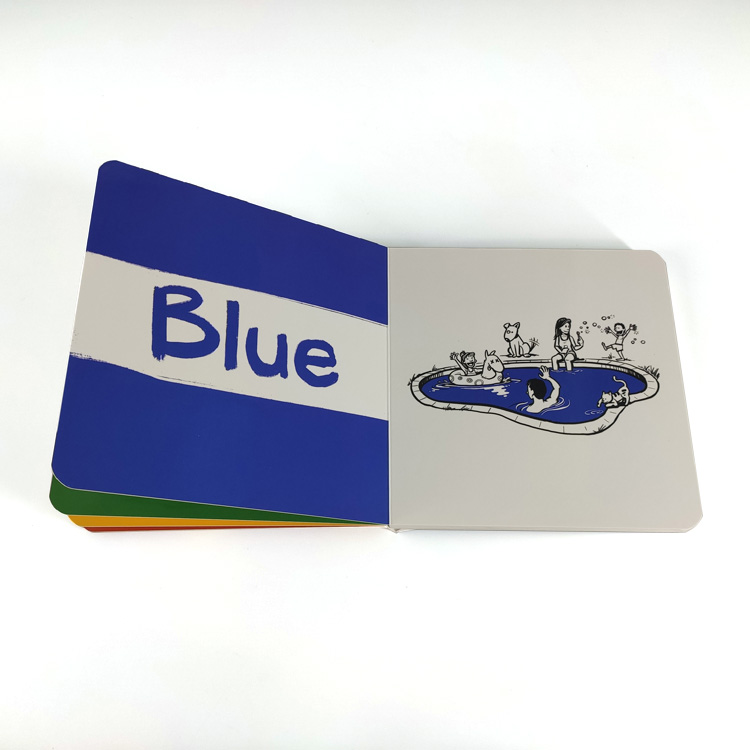
Offset printing is a widely used technique in the printing industry. Due to its versatility and ability to produce crisp and vibrant images. This method involves transferring ink from metal plates to a rubber blanket. Which then transfers the ink to the printing surface, typically paper or board stock. Compared to other printing methods, offset printing delivers excellent color accuracy, sharp details, and high-quality resolution.
For board books, offset printing is an ideal choice for achieving vivid illustrations and complex designs. The method's ability to accurately replicate intricate artwork. It ensures that the visuals on each page are captivating and engaging for young readers. Offset printing is also suitable for printing large quantities, making it a cost-effective option for mass production.
Digital Printing:
Digital printing has gained popularity in recent years due to its speed, affordability, and flexibility. Unlike offset printing, digital printing does not need to make plates. That making it a more straightforward and efficient process. This method involves transferring the digital image directly onto the desired printing surface through electronic data.
Digital printing is well-suited for short to medium print runs and offers quick turnaround times. It allows for on-demand printing, which is particularly beneficial for publishers. Or authors who require small quantities or personalized board books. Additionally, digital printing offers excellent color accuracy. It also can reproduce vibrant illustrations and photographs.
Screen Printing:
Screen printing, also known as silk screening. It is a versatile printing technique that involves pushing ink through a mesh screen onto the printing surface. Each color requires a separate screen, allowing for precise color layering and vibrant visuals. Screen printing is commonly used for printing on uneven or specialty materials like board stock.
Screen printing is suitable for board books that require bold and solid colors without intricate details. This method offers excellent opacity and durability. That making it a preferred choice for board books that undergo rigorous handling by young readers. Screen printing can add texture and dimension to the illustrations, enhancing the tactile experience of the book.
UV Printing:
UV printing is a modern and advanced printing technique. That uses ultraviolet (UV) light to quickly cure the ink onto the printing surface. This process results in vibrant colors, excellent image sharpness, and enhanced durability. UV printing is commonly used on a variety of materials, including board stock.
For board books, UV printing offers several advantages. The cured ink is resistant to scratching and scuffing, making it ideal for books that will be handled by young children. UV printing also provides a glossy and smooth finish. Enhancing the overall aesthetic appeal of the illustrations and graphics on the board book pages.
Choosing the Right Printing Technique:
When selecting the appropriate printing technique for your board book, several factors should be considered:
Quantity:If you require a large print run, offset printing would be a cost-effective choice. For smaller quantities or personalized printing, digital printing might be more suitable.
Artwork Complexity:If your board book contains intricate illustrations or photographs. Offset printing can reproduce them with precision. For solid colors or simple designs, screen printing or UV printing can provide the desired effect.
Budget:Consider your budget constraints and compare the costs associated with each printing technique. Offset printing usually more cost-effective for large print runs. While digital printing may be more economical for smaller quantities.
Timeframe:Assess your printing timeline. Digital printing offers quick turnaround times. While offset printing may require more lead time due to setup and production processes.
Conclusion:
Selecting the appropriate printing technique is vital to the successful production of board books. Digital printing, offset printing, screen printing and UV printing. Each offer unique benefits depending on factors such as artwork complexity, quantity, budget, and timeframe. Understanding the strengths of each technique will enable you to make an informed decision. And ensure that your board book printing is visually appealing, durable, and engaging for young readers.
When plan to custom catalogue printing, choosing the right binding method is crucial for creating a professional and functional end product. The binding method not only affects the overall look and feel of the catalogue but also determines its durability and ease of use. Here, we will explore some of the most commonly used binding methods for catalogues:
Saddle Stitching:
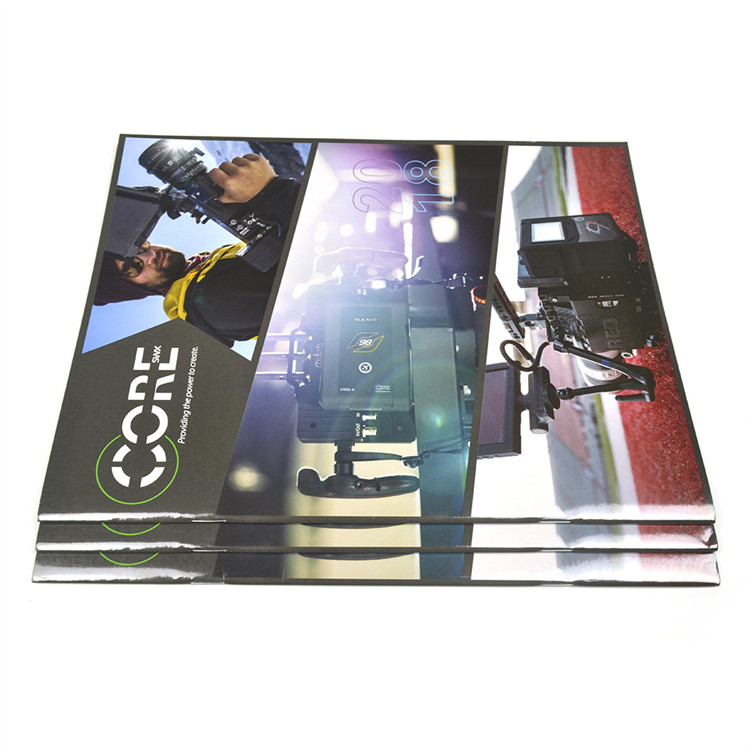
Saddle stitching is one of the most popular and cost-effective binding methods for catalogues. It involves folding the pages in half and stapling them along the fold line. This method is commonly used for catalogues with a lower page count, usually under 64 pages. Saddle stitching allows the catalogue to lay flat when opened and provides a clean and professional appearance.
Perfect Binding:
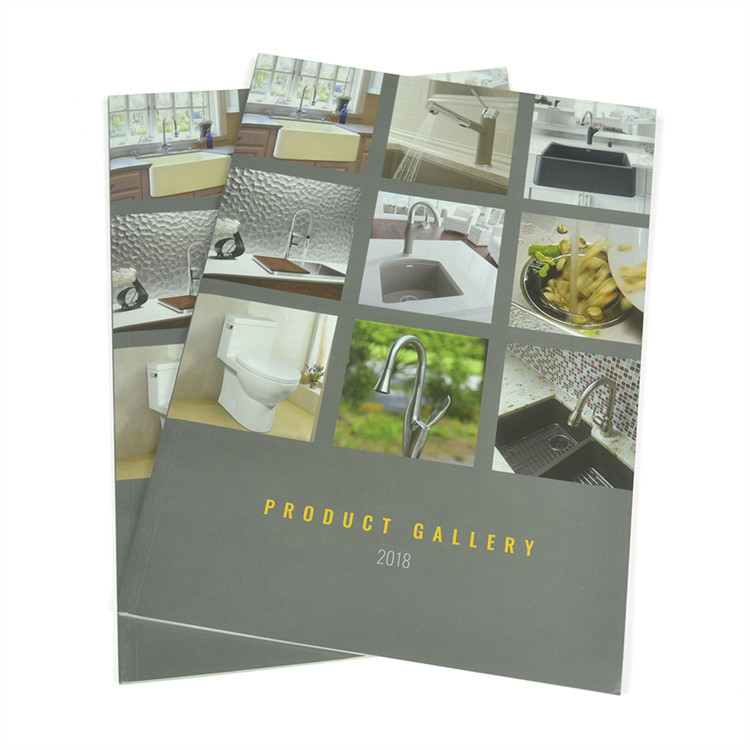
Perfect binding is ideal for catalogues with a higher page count, typically between 64 and 500 pages. In this method, the pages are gathered together and glued along the spine. The cover is then wrapped around the glued pages, giving the catalogue a sleek and polished look. Perfect binding provides a square spine that can be printed with extra graphics or text. That making it a popular choice for professionally designed catalogues.
Wire-O Binding:
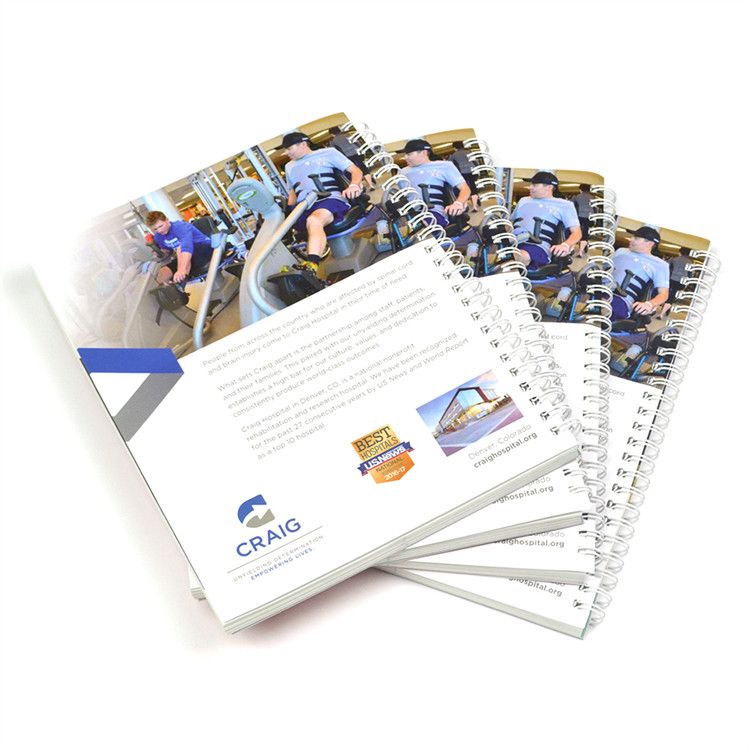
Wire-O binding, also known as hoop or double-hoop binding. It offers a versatile and durable option for catalogue binding. In this method, holes are punched along the binding edge of the pages, and a double-loop wire is inserted to hold them together. Wire-O binding allows the catalogue to lay flat when opened and offers the flexibility of adding or removing pages if needed. It is commonly used for thicker catalogues or those that need frequent content updates.
Spiral Binding:
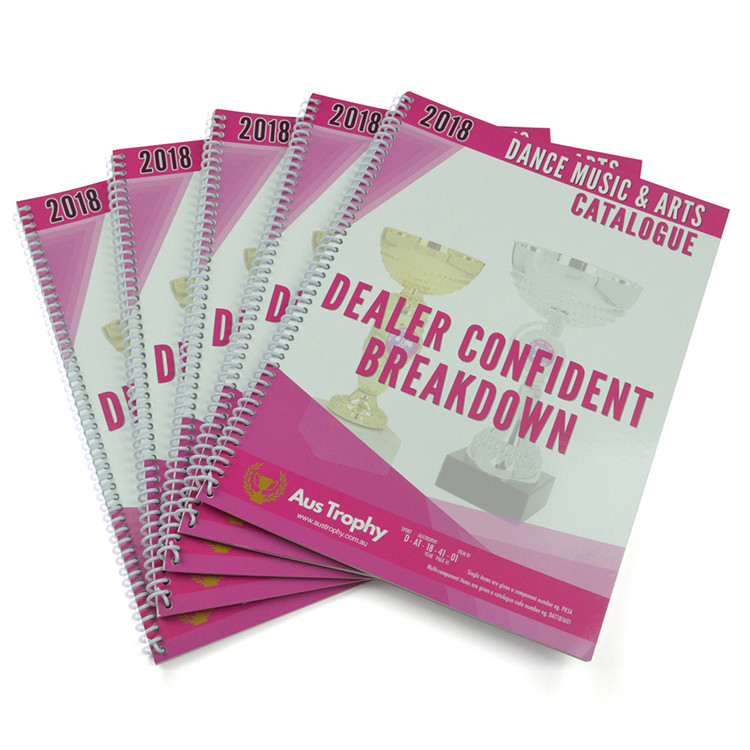
Similar to wire-O binding, spiral binding involves punching holes along the edge of the pages. But, instead of using a double-loop wire, a plastic or metal coil is inserted through the holes to hold the pages together. Spiral binding offers flexibility and durability. That allowing the catalogue to lay flat and enabling easy flipping of pages. This binding method is commonly used for smaller-sized catalogues. Such as pocket-sized or flip-chart style catalogues.
Case Binding:
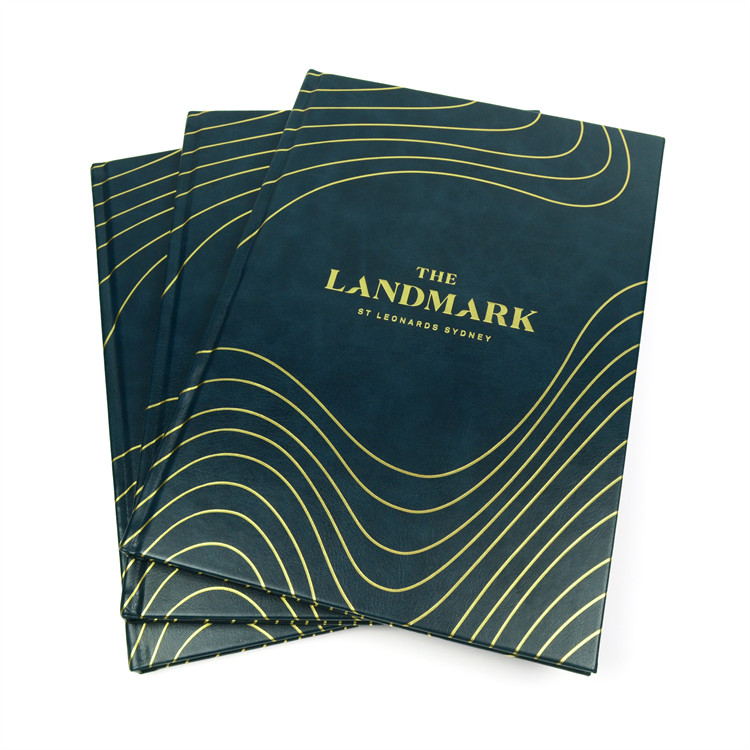
Case binding, also known as hardcover binding, is a premium option for catalogues printing that require a more large and sophisticated appearance. This method involves sewing the pages together and then attaching them to a hardcover book binding. Case binding provides excellent durability. It allows for the addition of foil stamping, embossing, or debossing on the cover to enhance its visual appeal. This method is typically used for high-end or commemorative catalogues.
When choosing the binding method for your catalogue. It's essential to consider factors such as page count, budget, functionality, and design requirements. Each binding method offers unique qualities and benefits that cater to different catalog printing needs. Consulting with a professional printing service can help you make an informed decision based on your specific project requirements.
In conclusion, the binding method plays a crucial role in the overall aesthetic appeal, functionality, and durability of your catalogue. Whether you opt for saddle stitching for a cost-effective solution. Perfect binding for a sleek and professional look. Wire-O or spiral binding for versatile and flexible options. Or case binding for a high-end finish. There is a binding method available to meet your specific catalogue printing needs.
Board book and paperback are both popular type of printing used for children's books and other publications. Whether as parents or author, select a right book type is the key. In this article, we will from parent's and author's view, guide you how to choose the best book type.
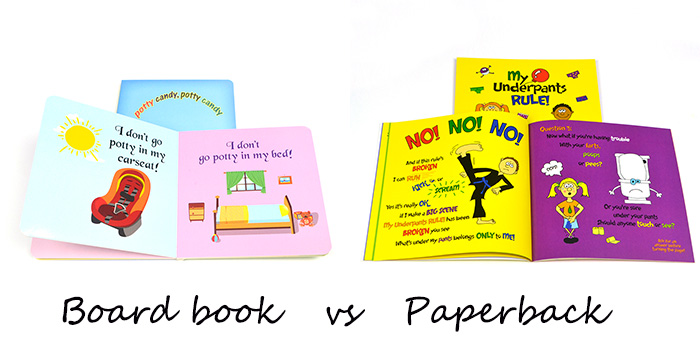
For parents, board book and paperback: how to choose?
As a new parent, grandparent, or caregiver, choosing the right type of book for your child can be a daunting task. There have so many options available in the book market, it is very hard to know where to start. One decision that parents often face is whether to choose a board book or a paperback book for their child. Here are listed some factors for parents to refer before making a decision:
Durability:Durability is one of the biggest advantages of board books. They are designed to withstand rough handling, drool, and spills, which is important for young children who are still learning to handle books carefully. Paperback books, on the other hand, are more fragile and are more likely to tear or bend if mishandled. If you are purchasing a book for a very young child, then a board book may be a better choice due to its sturdiness.
Cost:Board books are generally more expensive than their paperback counterparts, due to the thicker pages and sturdier binding. Many board books are also published in smaller print runs, which can drive up the cost even more. If cost is a concern, then a paperback book may be a more budget-friendly option.
Content:The content of the book is also need to consider. Board books are typically designed for young children, with simple stories, bright colors, and minimal text. Paperback books, on the other hand, can cover a wider range of topics and are often written for older children. If you are looking for a book with a specific message or topic, then a paperback book may be a better choice.
Artwork:The type of artwork in the book is another consideration. Board books often have simple illustrations with bold colors and high contrast to catch the attention of young children. Paperback books, on the other hand, may have more detailed illustrations with a wider range of colors and shading. If you are looking for a book with complex and detailed illustrations, then a paperback book may be a better choice.
Size:Finally, the size of the book is an important consideration. Board books are often smaller in size and have fewer pages than paperback books. This makes them easier for young children to hold and handle. Paperback books, however, can be larger and have more pages, which may be more appropriate for older children. If you are purchasing a book for a very young child, then a smaller board book may be more appropriate.
Overall, the choice between a board book and a paperback book ultimately depends on your child's age, the content of the book, and your budget. Board books are more durable and designed for very young children, while paperback books are more diverse in content and artwork. Consider these factors when making your decision, and choose the type of book that best fits your child's needs and interests.
For author, board board vs paperback: which is suit for your book?
For author, printing is an important consideration when it comes to publishing children's books. Among the most popular formats are board books and paperbacks, which use different printing processes.
Board Book PrintingBoard books are designed with thick cardboard pages, making them a popular choice for infants and toddlers, as they can withstand rough handling and are easy to clean. Board book printing typically involves a process known as offset printing, which involves creating templates for each page, using plates to transfer the design onto the card, and cutting the pages to the required size.
This process results in a high-quality product, with bright, vivid colors and sharp images. However, it is a more labor-intensive and expensive printing process than paperback printing.
Paperback books are typically printed using digital printing technology or a process known as offset printing. Digital printing is a fast and cost-effective printing method, which involves transferring the design directly onto the paper using digital files.
Offset printing, on the other hand, involves printing a continuous roll of paper and cutting it to size. This method is ideal for large print runs and produces high-quality products at a lower cost.
When choosing between board book printing and paperback printing, publishers should consider factors such as cost, target audience, and intended use.
If the book is aimed at young children, board book printing is a more suitable option, as it is durable and long lasting. For books aimed at older children or adults, paperback printing is generally more appropriate.
Additionally, the intended use of the book should be considered. If the book is primarily for entertainment, then paperbacks may be more suitable. However, if the book is intended for educational purposes, board book printing may be the better option.
In conclusion, both board book printing and paperback book printing have their advantages and disadvantages. The choice of which format to use depends on the intended use, budget, and target audience. Ultimately, both formats can produce high-quality products that meet the specific needs of children readers. If you also want to learn about the difference between board book and hardcover, please click "board book vs hardcover" this post.
